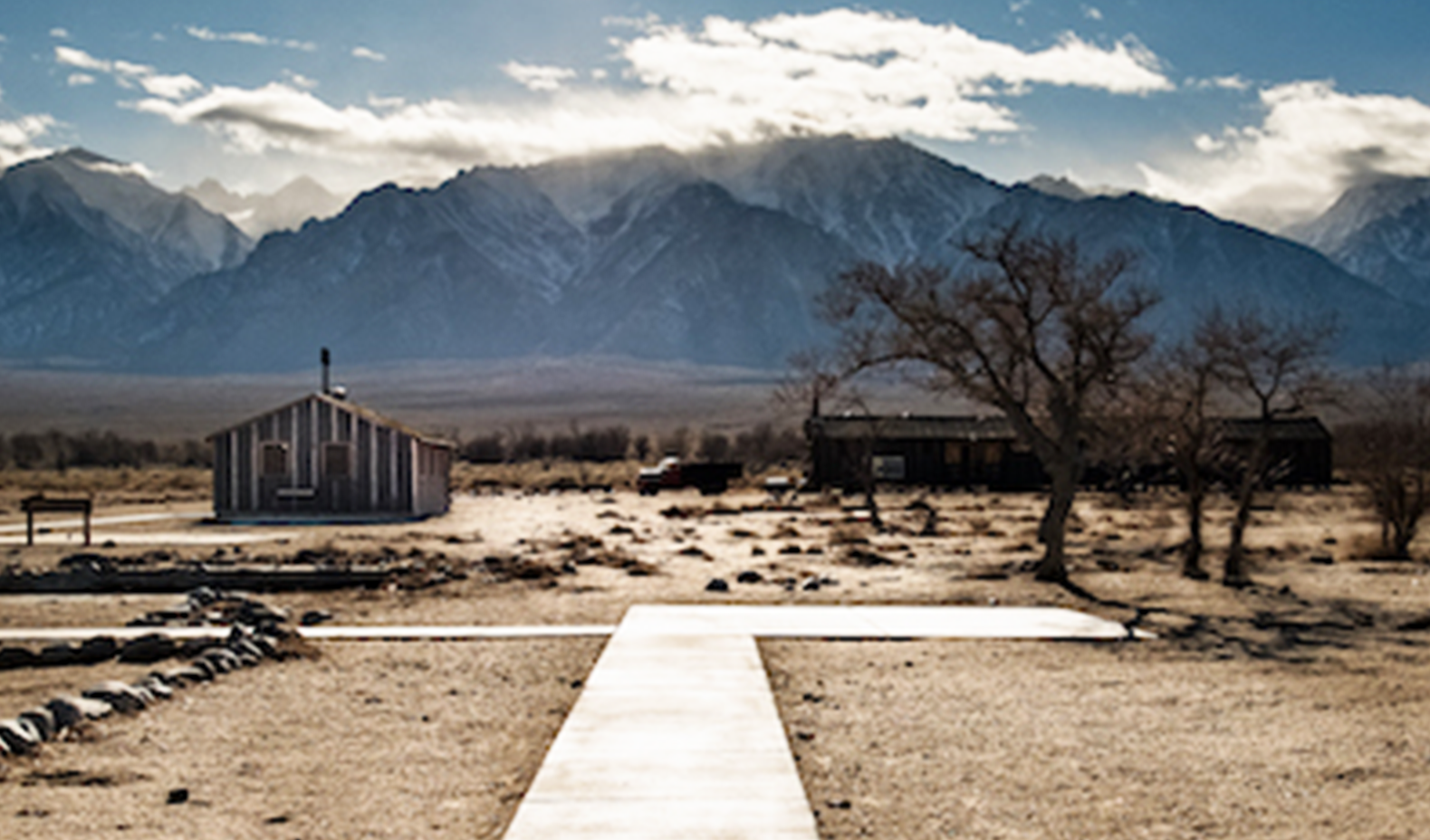Manzanar, Distant Mountain Freedom (Photo: Sandy Sugawara)
The new art book by Sandy Sugawara and Catiana Garcia-Kilroy captures haunting images of all Japanese American incarceration centers.
By Gil Asakawa, Contributor
Sandy Sugawara didn’t start out to produce a beautiful coffee-table art book filled with photographs of every Japanese American concentration camp from World War II — or what remains of them today. She also didn’t plan on enlisting a friend from a photography class, Catiana Garcia-Kilroy, to help capture the powerful images for the book.
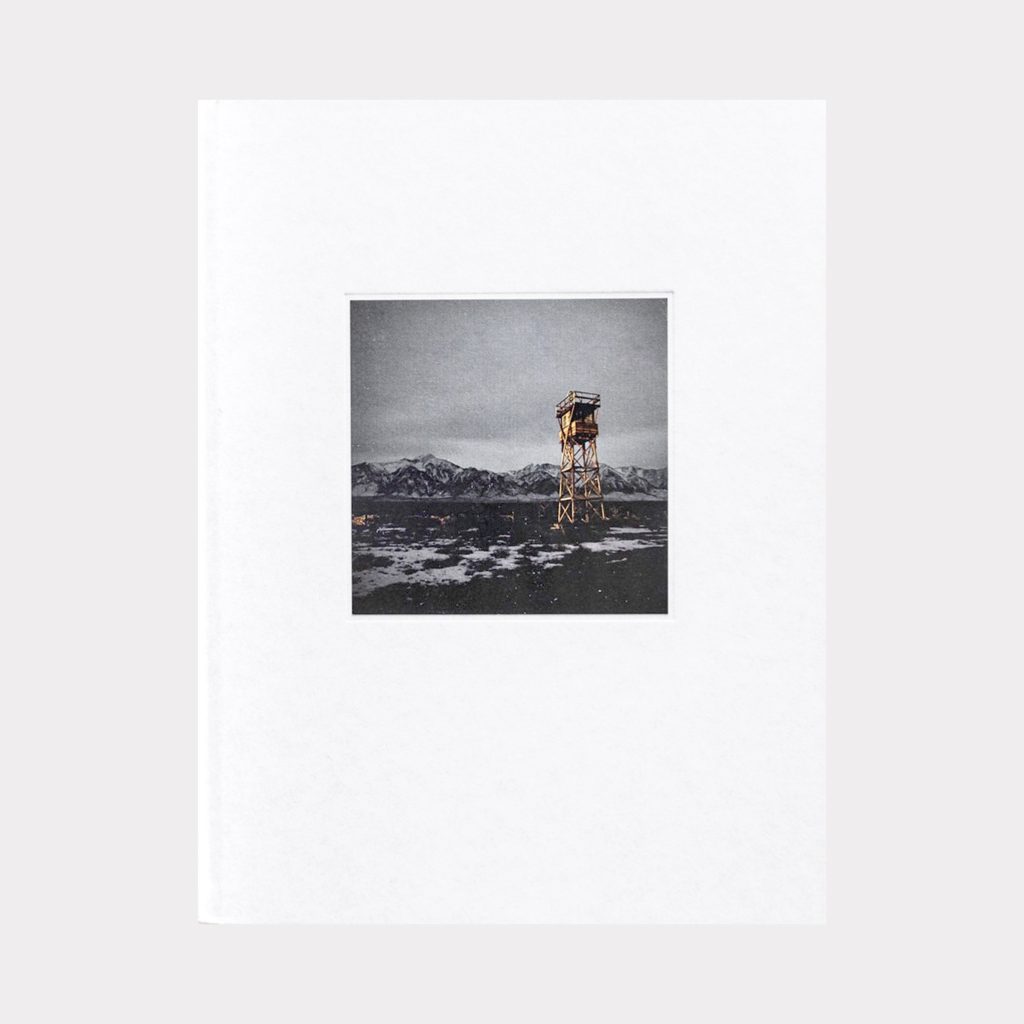
“Show Me the Way to Go to Home” cover
This project began as a personal visual record of Amache, the camp where her parents spent WWII. Like many Japanese Americans, Sugawara was raised in a home where stories of camp life and the wartime incarceration experience just weren’t shared. When Sugawara’s son asked her mother about it for a school project, she said she couldn’t discuss it because it was too painful.
“But as my parents got older, particularly my mother, when she was in the hospital, and dying, she started talking about it like nonstop,” she said.
When Sugawara mentioned to her mother that she’d like to take photographs of the camps, she recalls her mom asking, “Why would you want to do that? Those are awful places. And I said because people can, you know, forget about them.”
Sugawara began her self-motivated project of chronicling camp sites with her camera while her mom was still alive, including Amache in Colorado, where her parents had been incarcerated. But after her mother’s death, the project evolved to ultimately include every camp and publish the images in a book.
“It was my mother’s death that made me realize that I was really serious about doing a book that told people what these camps were like,” she said. “Once my mom died, I decided that I really wanted to make it much more serious and hopefully would tell people a lot more than just a few camp photos would.”
Box of Lost Memories
Part of the book’s inspiration came from a box Sugawara found when she was packing her mother’s belongings.
“When I got home, I discovered a metal box,” she recalled. “And in it, my father had his wallet that he carried around all the time. I recognized it, and I thought, ‘Oh, that’s weird. My mom kept his wallet.’ And then there were some credit cards and IDs and stuff. And then I saw that he had his meal tickets from Amache and a few other camp passes. And also his Boy Scout card.”
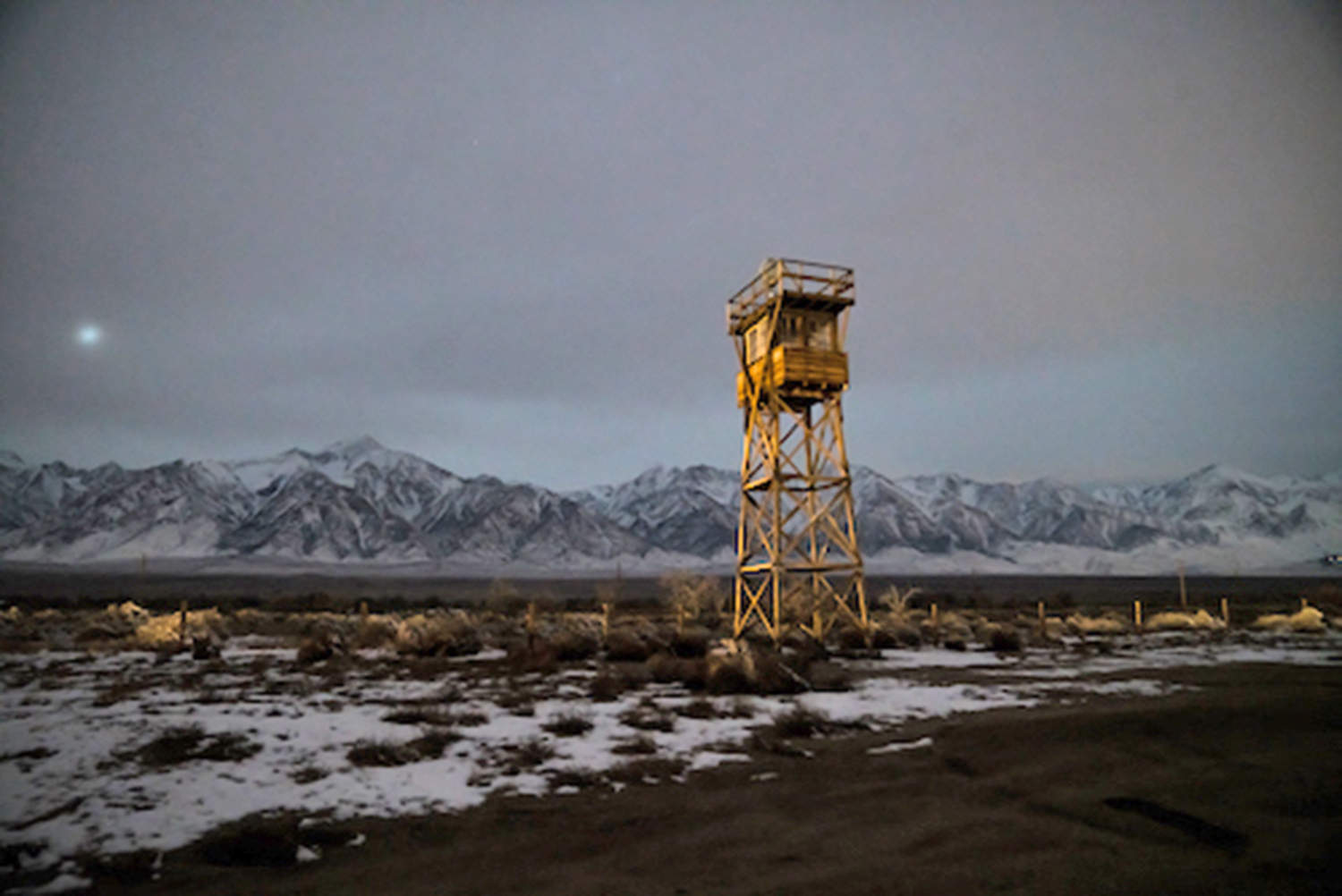
Manzanar, Winter’s Night (Photo: Catiana Garcia-Kilroy)
“I am not actually a photojournalist. I’m a journalist, a reporter, but I never actually took pictures,” Sugawara explained. “And when I started taking photographs, I think I kind of stayed away from photojournalism because it felt too much like work.”
Sugawara was taking a photography class and was more inclined to shoot landscapes. In 2018, she and a friend from the class, Garcia-Kilroy, who is a development economist in her day job, began going to camp sites to shoot photos.
Garcia-Kilroy knew some of the history of the incarceration, but she had no idea of the tragic scope. “When Sandy said, ‘Well, you know, my family was incarcerated. I had no idea that it had been, you know, whole families, 120,000 people incarcerated in these camps. I had no idea where they were, just a very vague idea,” she recalled. “So, this really needs to be more broadly known. And then from a photography perspective, I thought it was a very interesting challenge in terms of how to use photography to reflect on memory, but also subjective memory.”
Sugawara explained: “After my mom died, and I discovered my dad’s box, I decided I really wanted to do something meaningful. And I decided that photography is a way if we can make this an immersive experience, if we could make people feel what it was like to be at these places and to understand the loneliness and the isolation that maybe that would be an effective way for people who otherwise might not be interested in learning about the camps to learn about the camps.”
They didn’t plan at first to visit all 10 camps.
“Some of the photographers that we talked to said it could be redundant,” Sugawara said. “If you do 10 camps, they might all end up looking alike. But we realized that, in fact, that wasn’t the case. Each camp had its own unique personality, its own unique history. And at some point, we realized, well, we didn’t want to just, you know, two camps or three camps so that it would feel like somehow they weren’t as important. So, we eventually decided that we needed to do all 10 camps.”
Making the Book
When people think of photographs of the Japanese American concentration camps, the prevailing imagery that’s conjured up in their minds are the classic black-and-white photographs of Ansel Adams and Margaret Bourke-White that ran in LIFE magazine during the war or the WRA government photographs that have been reproduced. One of the few books with contemporary photographs of the camps was “Placing Memory: A Photographic Exploration of Japanese American Internment (Volume 3),” published by Todd Stewart in 2008.
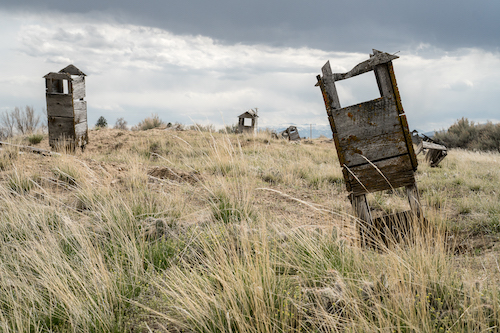
Heart Mountain, Root Cellar (Photo: Catiana Garcia-Kilroy)
“Show Me the Way to Go to Home” adds a powerful and beautiful volume to the library of Japanese American historical record. Published by Radius Book, which specializes in art books, it’s not just a typical photo collection with images. The images are the main event, to be sure. But there are also passages of text by Sugawara and Garcia-Kilroy, as well as Donna K. Nagata, and poetry by Brandon Shimoda and Christine Kitano. The foreword for the tome is by Karen Korematsu.
Radius put an amazing level of effort into making the book itself a work of artistic expression. The photographs of each camp are reproduced on heavy stock in vivid color, and the historical notes that state the name, dates opened and closed, acreage and peak population, as well as a brief introduction about each camp, are printed on thick rice paper.
The box that Sugawara mentions that contained her father’s wallet is the first thing that readers see when they flip open the front cover. “The Box” with text by Sugawara, is a slim booklet on fine paper that’s sewn into the inside front cover, which displays a photo of a metal box with a key inserted in it.
Open the booklet and Sugawara explains the items she found inside starting with an autograph book where her father entered his friends’ new addresses in various concentration camps. Each page is stamped “Detained Alien Enemy Mail Examined.” The box also held other documents: A notice of incineration for her grandfather, who died of undiagnosed rectal cancer while incarcerated; a photograph of her grandfather’s funeral at Amache; the wallet with various IDs; a meal ticket for Amache; the Boy Scouts membership card; and photos of her parents and their families.
Once readers turn to the actual book, there’s a short poem by Kitano, “Gaman,” and Shimoda’s longer poem “Gila River.”
Pictures Tell the Story
The photographs of the camps are next, with Amache being first. The landscapes capture the lonely desolation of Colorado’s Eastern Plains, with crumbling foundations scattered amidst rebuilt guard towers and a barrack, as well as an original barrack with its torn tar paper exterior that was moved back to the camp from neighboring Granada’s town park, where it was used to store equipment.
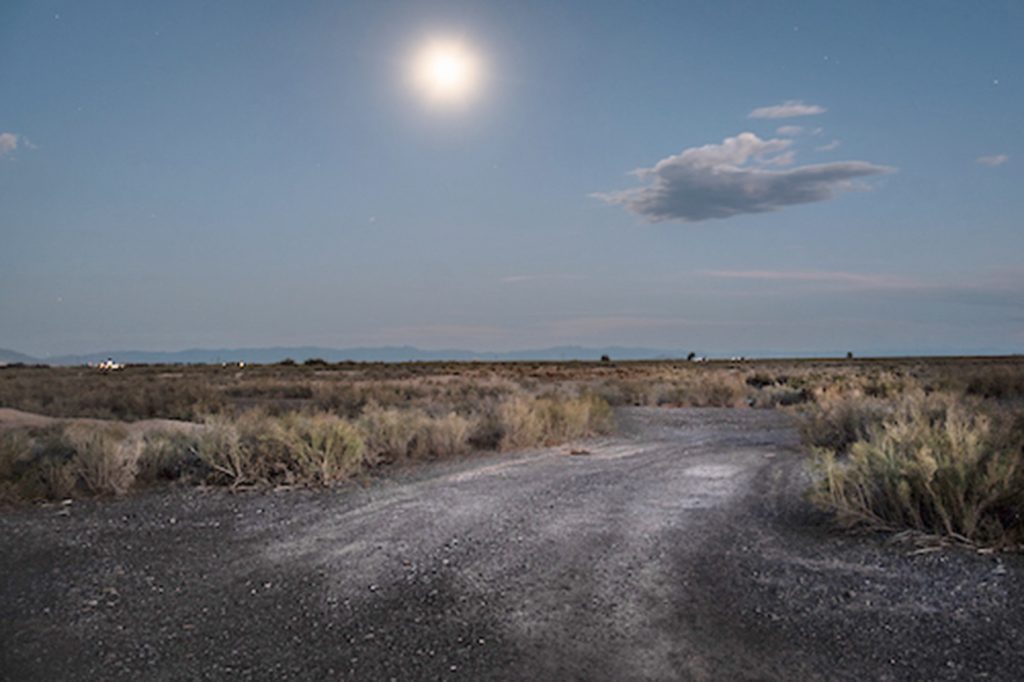 The images evoke a wide-open wildness of scrub and grass and sunshine and sky, and the emotional impact of Sugawara and Garcia-Kilroy’s vision matches the feelings that wash over anyone who attends a pilgrimage to the forlorn site.
The images evoke a wide-open wildness of scrub and grass and sunshine and sky, and the emotional impact of Sugawara and Garcia-Kilroy’s vision matches the feelings that wash over anyone who attends a pilgrimage to the forlorn site.
The other camps are represented with a variety of treatments that show each location’s desolation as well as the breathless beauty of Western sunsets and sun-bleached stones. The pair of photographers are exceptionally good at shooting a certain slant of sunlight, both outside and interiors, on concrete and soil.
On photos of Poston in Arizona, some of the images show the timeworn remains of incarceration along contemporary indigenous lives reflected in murals on crumbling adobe walls and a lonely basketball hoop and backboard.
The photographs are carefully composed whether they’re straightforward landscapes or abstract closeups, like the cracked wall that has the book’s titular graffiti scrawled on it: “Show me the way to go to home.”
The book closes with essays about artist Chiura Obata, who was incarcerated at Topaz in Utah, and several other Japanese Americans and their wartime experience, followed by text by Korematsu, Ronald Reagan’s words when he signed the bill providing reparations for Japanese Americans, and an essay, “Intergenerational Impact of the Japanese American Incarceration” by Nagata.
The book is full of visual wonder and intellectual curiosity; even those who know about the Japanese American incarceration will be moved and affected by “Show Me the Way to Go to Home.
“I’ll tell you one story about Amache,” Sugawara said. “We were wandering through Amache, and this couple came up to me and they said, ‘Were you here?’ And I said ‘No, but my parents were.’ And they said, ‘We are so sorry. We really apologize.’ So, we started talking about Amache. They said that they’d never heard of this before. ‘This is terrible. This is awful.’
“And that’s the importance of trying to preserve this and tell the stories in as many ways as possible because, you know, each day at least one or two people learn about it,” Sugawara concluded. “And that’s the goal.”
NOTE: Some online bookstores have sold out of copies of the book, but it’s still available from the publisher, Radius Books (radiusbooks.org), for $65 with free shipping.
This article was made possible by the Harry K. Honda Memorial Journalism Fund, which was established by JACL Redress Strategist Grant Ujifusa.
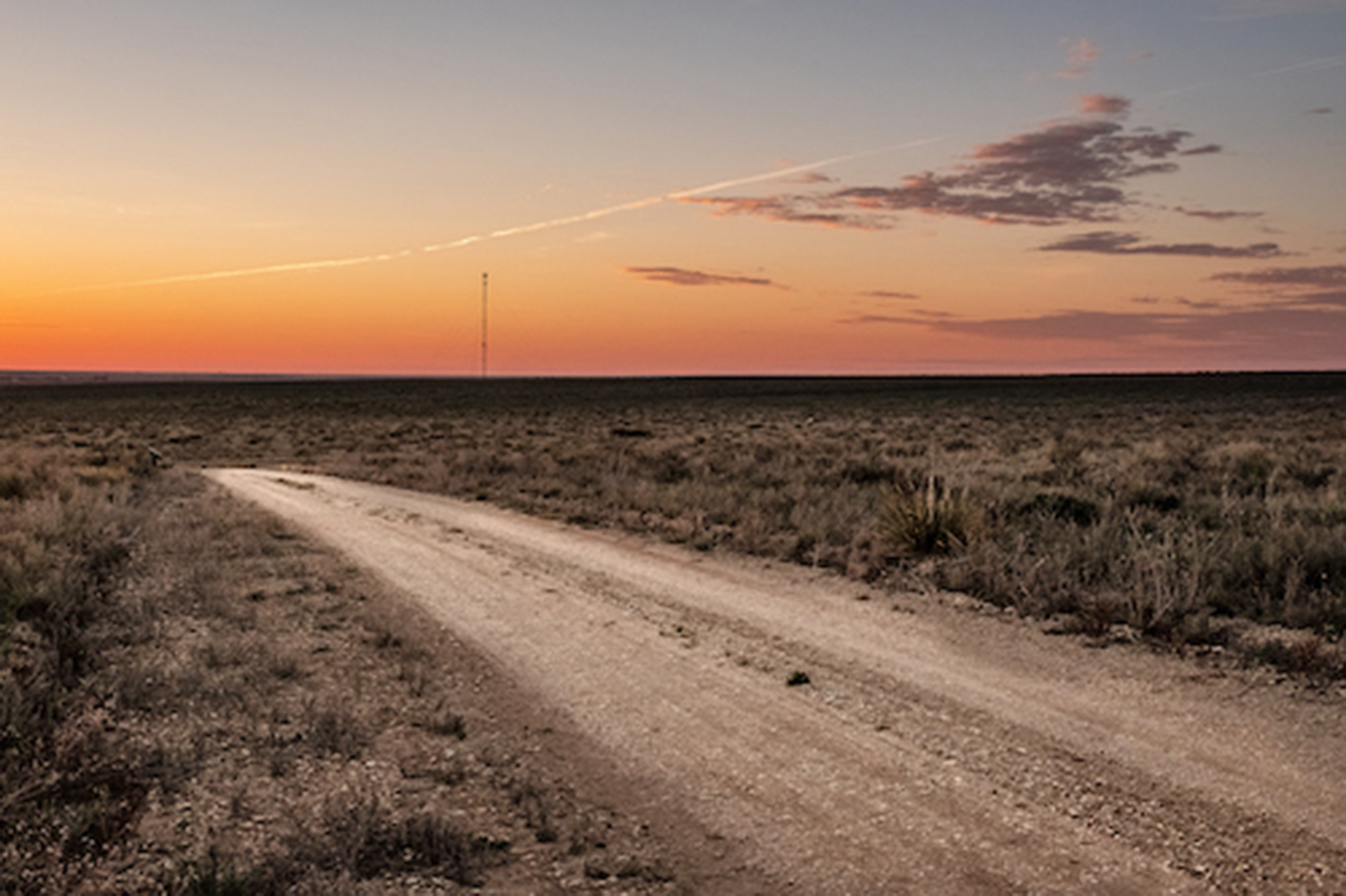
Amache, Road to Nowhere (Photo: Sandy Sugawara)

